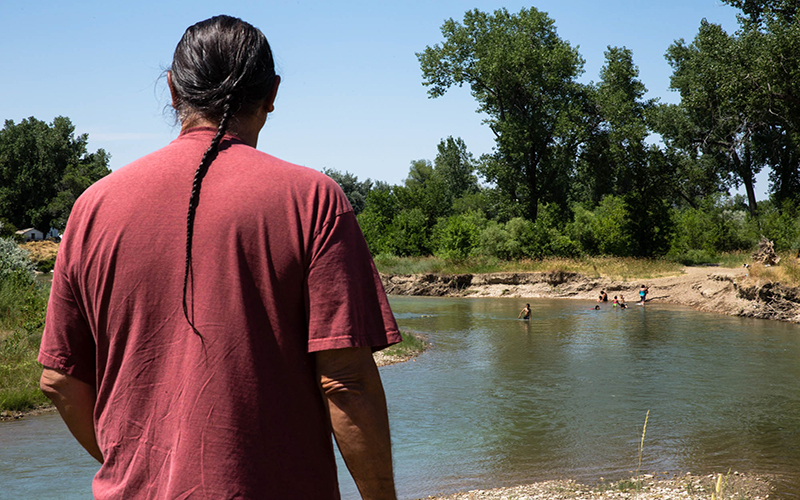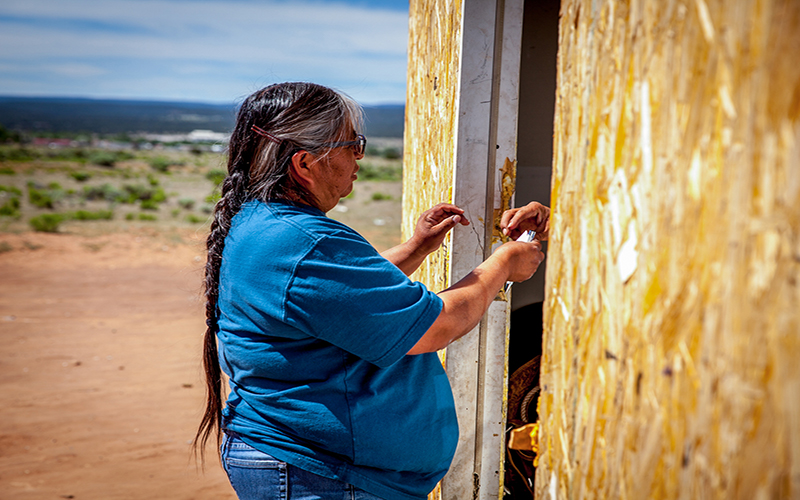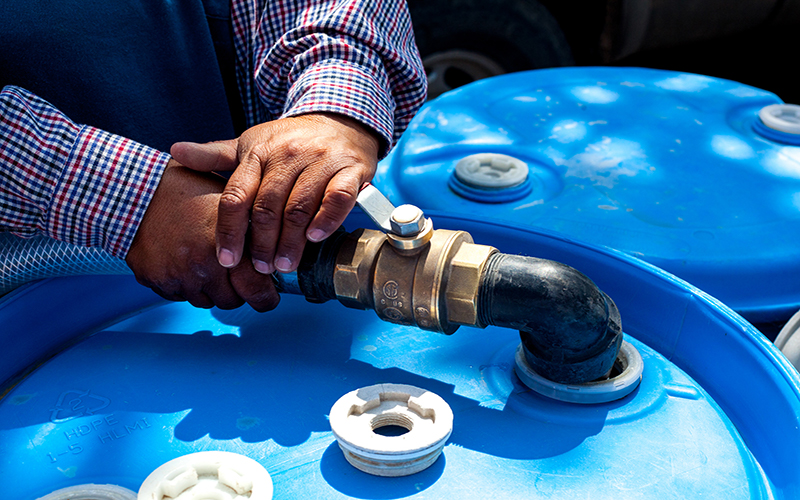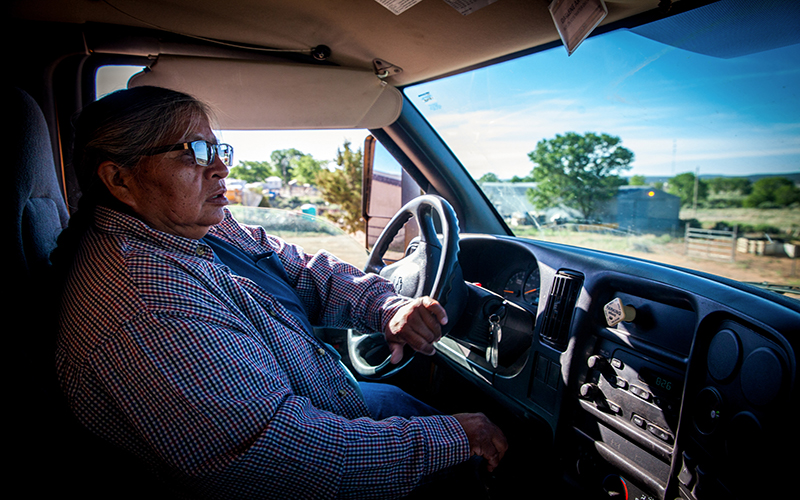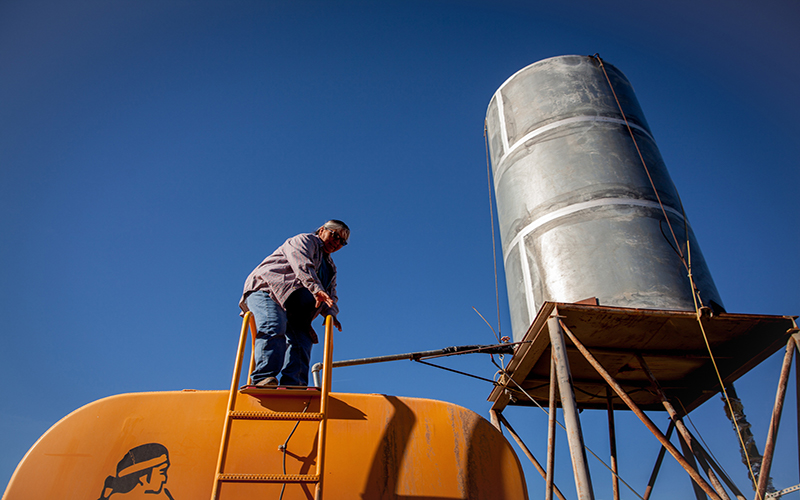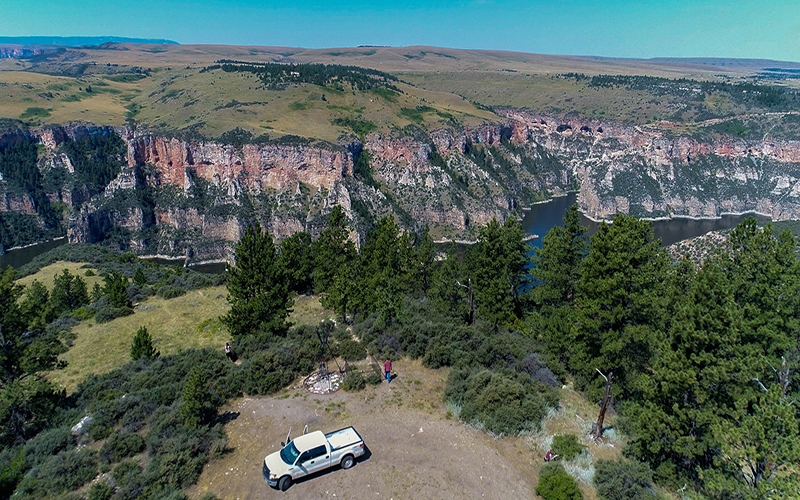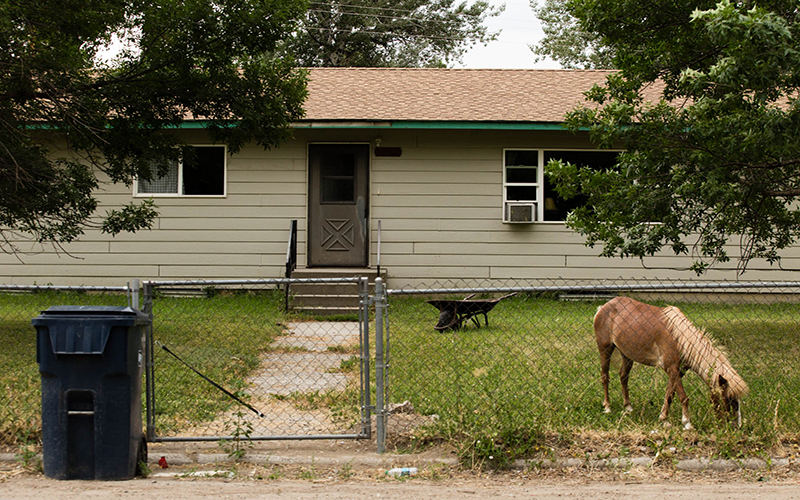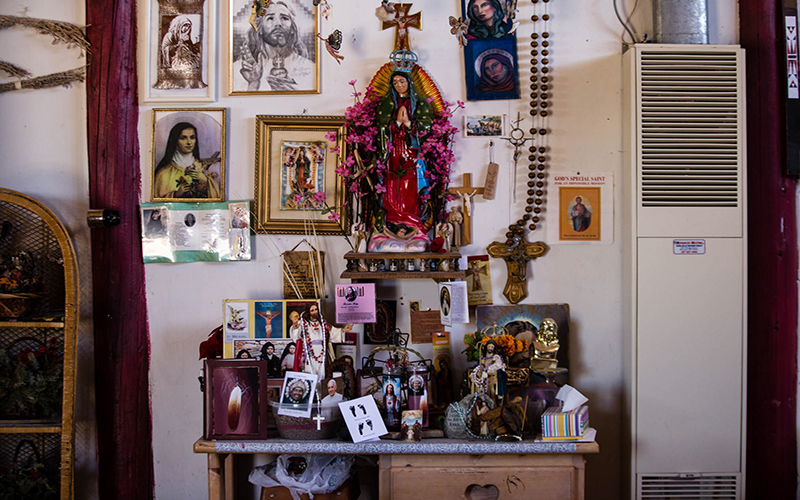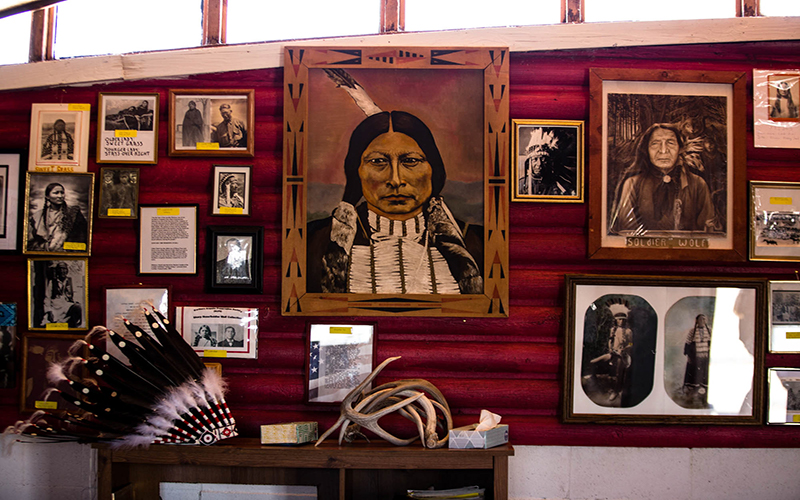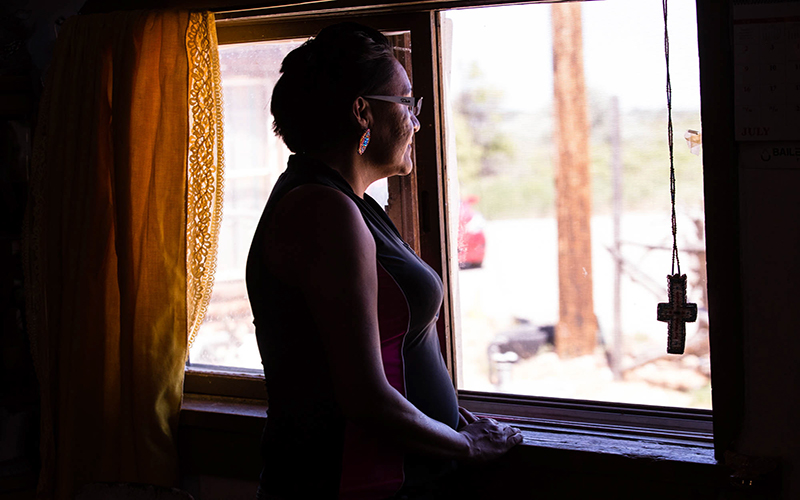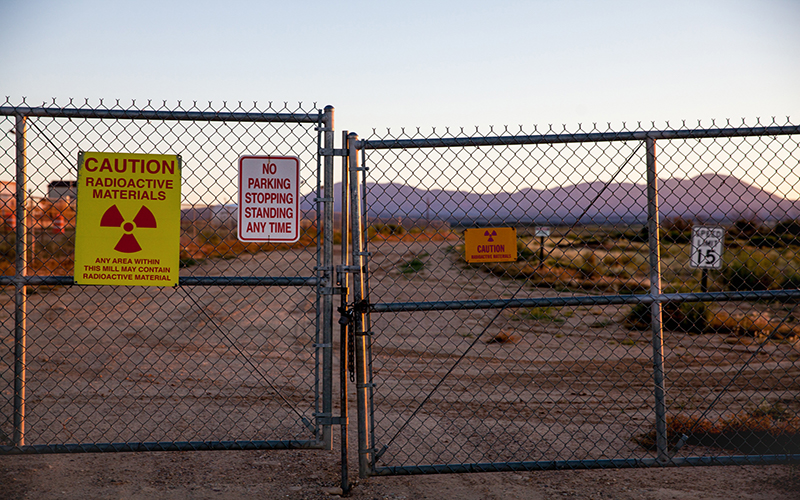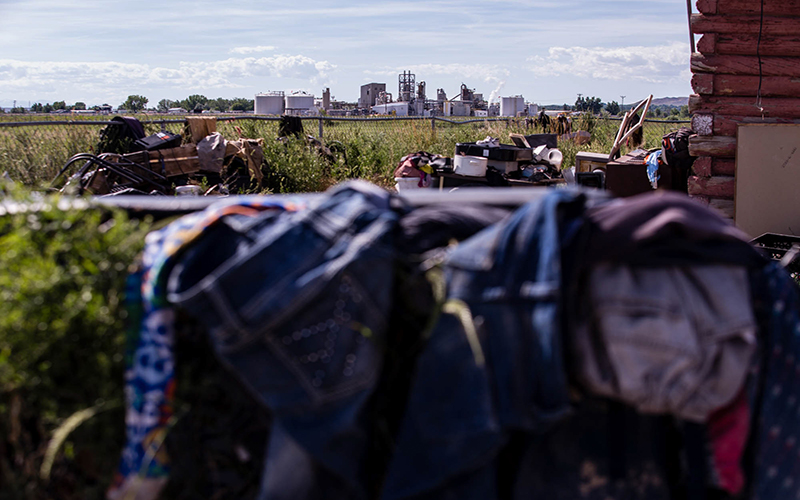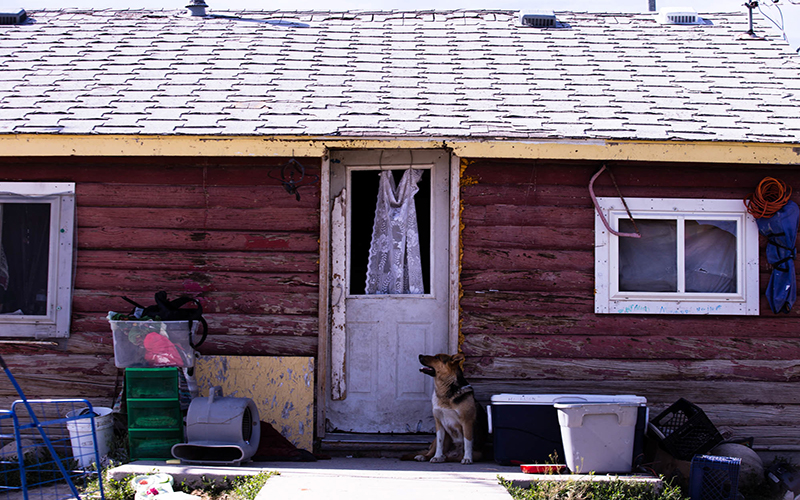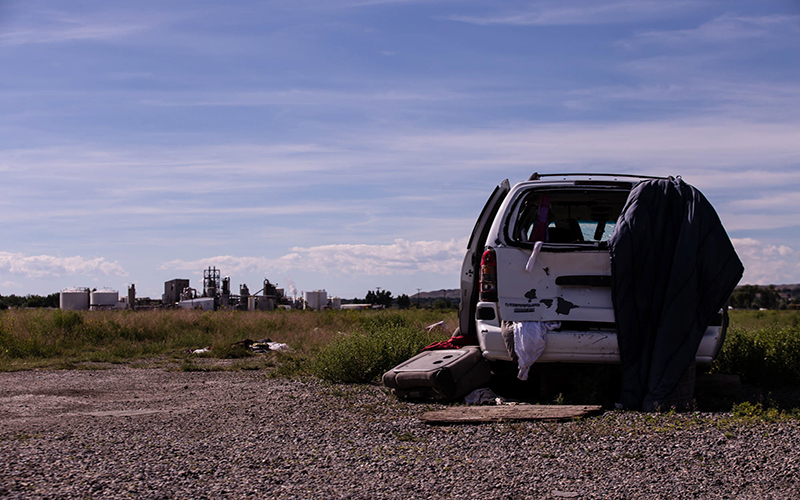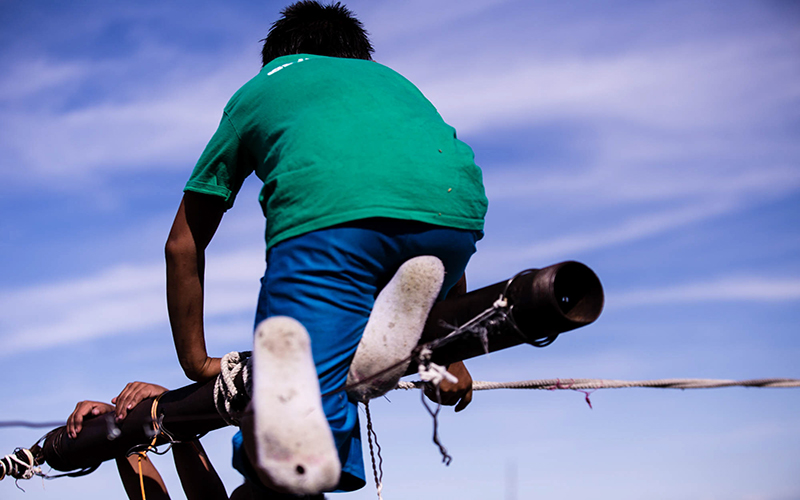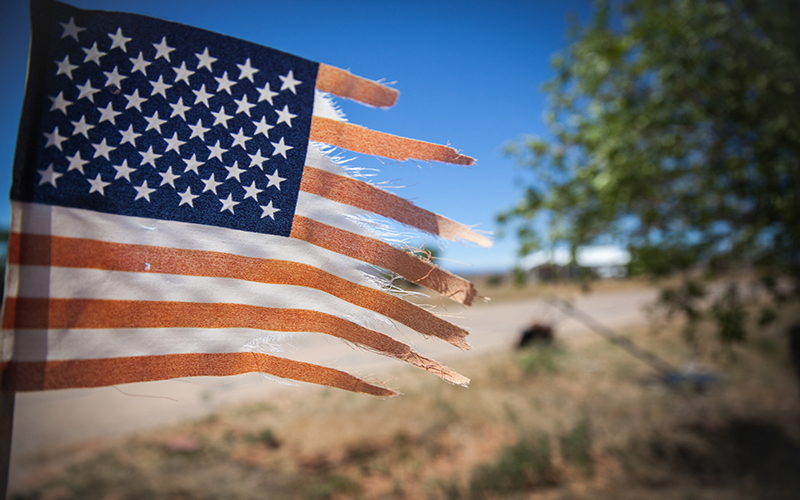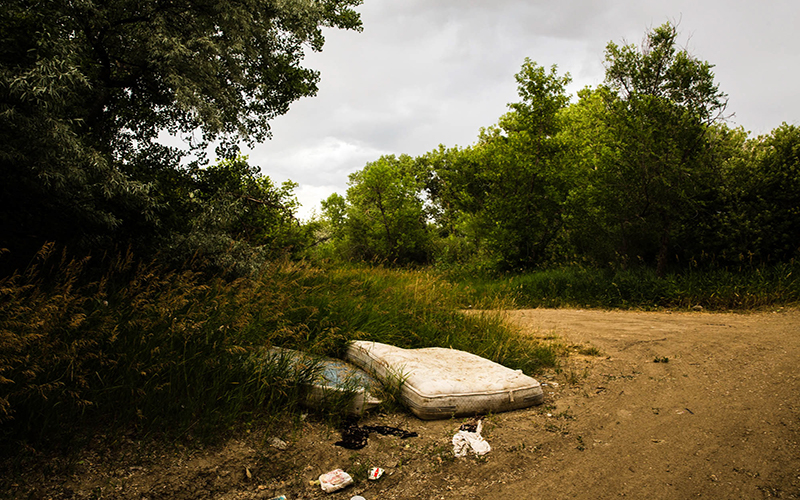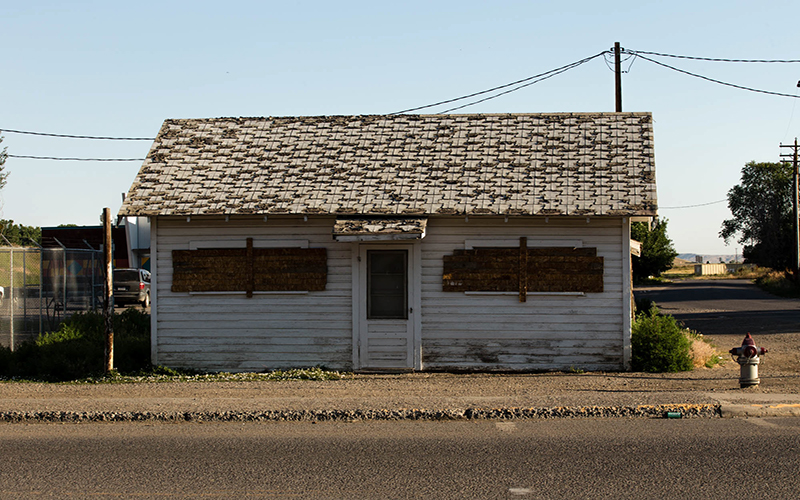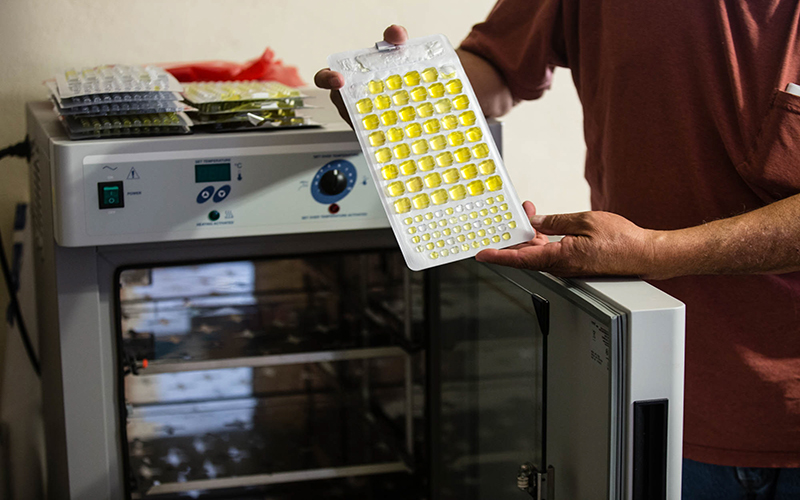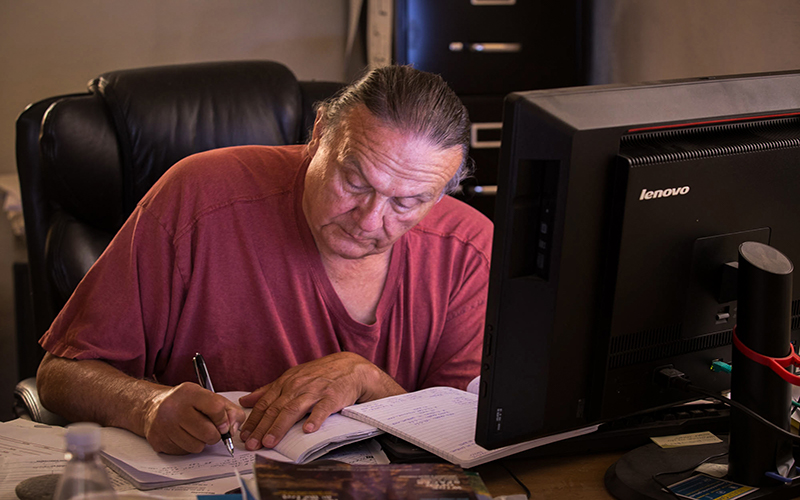CROW AGENCY, Mont. – When John Doyle first noticed signs of trouble in the Little Bighorn River, he was still a young member of the Apsaalooke Nation in southeastern Montana.
News21
This report is part of the “Troubled Water” project produced by the Carnegie-Knight News21 initiative, a national investigative reporting project. For the complete “Troubled Water” project, visit troubledwater.news21.com.
Stagnant water would pool in some areas, filling with algae. It wouldn’t even freeze in the cold of winter. Later, catfish would turn up with quarter-size white sores.
Doyle knew something had gone seriously wrong with the river – from which tribal members would drink, swim and practice religious ceremonies.
He took his observations to officials from the Bureau of Indian Affairs. After several months, he went to them again. And again.
Looking back, Doyle, now 68, recognizes he was naive to think the government would take quick action. The tribe’s wastewater was leaching into the river. He now understands that the tests, studies and maze of bureaucratic hurdles to address such water issues take time and money.
Three decades later, Doyle managed to raise enough funds to move and replace the sewage pond and safely separate the sewage pipes from clean water lines, which had been placed side by side. The river still teems, however, with virulent strains of E. coli and nitrates.
Doyle’s experience wrestling with the complex bureaucracy necessary to address water issues is common on Native American reservations. During the past decade, tribal water systems averaged about 60 percent more water-quality violations compared with nontribal water systems, according to Environmental Protection Agency data.
A variety of forces work against tribes and their quest to provide clean, safe water to their members. Tribal members must cope with the health repercussions of extensive mining and farming activities on or near their land, whether approved by the tribe or not. The federal government carved reservations in remote and confined pockets of the U.S., making it difficult to provide reliable infrastructure. They often lack the money to improve their water systems themselves, which means they have to navigate a complicated puzzle of government agencies to shore up funding.
Native Americans are far more likely than any other group to live without plumbing – at up to 30 percent of households, according to the EPA. A recent report by the Democratic staff of the House Committee on Natural Resources notes that tribes consistently receive the lowest funding per dollar of need out of any jurisdiction in the U.S.
Research also indicates Native Americans are more likely to experience health problems from water contamination because they use the land and water for subsistence and cultural practices.
Many Native Americans said they are frustrated at the lack of commitment to their water and health needs, and many fear resources will only become tighter now as they fight for a dwindling pool of grants.
President Donald Trump earlier this year proposed cuts to the EPA and other government agencies, which support tribal water systems.
For strained water systems, it’s like rubbing salt on wounds that have never been given the chance to heal. A 2003 report by the U.S. Commission on Civil Rights reported funding for tribal programs was in a state of crisis so systemic it violated civil rights.
“Just keep in mind the EPA is already one of the most underfunded regulatory agencies,” said Chris Shuey, a research director at the Southwest Research and Information Center who studies the effect of uranium exposure on Navajo children. “It’s supposed to do a lot with very little. If you already take an agency vulnerable from a funding standpoint and take away even more of its funding, it’s going to essentially eliminate its requirement to regulate.”
Three decades after Doyle’s meetings with Bureau of Indian Affairs officials about the Little Bighorn River, he watches Apsaalooke children swimming and playing in the water.
Doyle is reminded of an Apsaalooke elder’s teaching: “Water is an essential part of our life. But it’s also dangerous. It can take our life very easily.”
MINING LEAVES LEGACY OF CONTAMINATION
Mining companies have extracted materials such as gold, uranium and coal on Native American lands for centuries. The contamination left behind, such as excess lead, selenium and chromium, remain long after the miners’ final paychecks.
Roughly 600,000 Native Americans live within 6 miles of an abandoned mine, according to the Center for Native American Environmental Health Equity.
Most of the uranium mines in the western United States are on federal and tribal lands, a government mining database shows. Public health researchers are especially concerned about these mines because the half-life of uranium is more than 4 billion years.
Chronic exposure is linked to cancer and kidney disease.
“You don’t have a lot of options if your water is contaminated with uranium,” said Debra MacKenzie, a researcher at the University of New Mexico. “It’s hard to take away a mountain. You can’t just move away.”
A recent U.S. Department of Justice Department report on environmental justice lists the legacy of Cold War-era mines in Navajo country as “one of the most severe environmental justice problems in Indian Country.”
Most communities aren’t so lucky. Settlements with mining companies are rare when it comes to remediation of contamination on Native American lands, said Paul Robinson, a research director at the Southwest Research and Information Center in New Mexico.
“Trying to avoid cleanup is a standard industrial practice,” Robinson said.
When mining companies don’t pay for cleanup, the burden falls on cash-strapped government agencies – and the people who live there.
Standing on the front porch of his home crafted out of recycled beams, 89-year-old Mark Soldier Wolf, an elder of the Arapaho Nation, locks his gaze on the sulfuric acid plant less than a mile up the road. In 1957, the Bureau of Indian Affairs ordered him off his land to make way for a uranium mill, he said.
He relocated, but his troubles didn’t stop there. To mill weapons-grade uranium, operators crushed ore and deposited waste into unlined pits, which leached into the groundwater. Twenty-five years after the mill closed, the U.S. Department of Energy informed residents of the contamination. It took another decade before the department connected them to an alternate water supply.
Today, the department’s cleanup plan is to let the uranium flush naturally over the next 100 years, but this target will not be reached, said Steve Babits, a scientist with the Arapaho environmental office. The alternative water system, which runs through contaminated groundwater, is past due for an upgrade – and some residents aren’t even connected to it. Aside from a few fact sheets about the area posted to the energy department’s website, there’s no information going out to tribal members, Babits said.
Soldier Wolf and his family said they do not trust agencies in charge of the site. More than 50 years since officials kicked Solder Wolf off his land, he and his kids shell out 75 cents a bottle for water rather than drink from the alternative water supply – water they have to pay the tribal utility for.
“I’m still waiting impatiently,” Soldier Wolf said. “For what? I don’t know anymore.”
Even when the traces of mine contamination aren’t visible, they can still pose a threat. “A lot of people don’t realize they are living near (old) mine sites,” said MacKenzie, the New Mexico researcher.
Tommy Rock, a scientist and member of the Navajo Nation, tested water in communities on and off the reservation with an environmental justice grant from the EPA. When results came back in 2015, what he found horrified him, he said. In Sanders, Arizona, just outside the Navajo Reservation, his tests indicated the average concentration of uranium at 1 1/2 times the EPA’s drinking water limit.
Records show the EPA and Arizona Department of Environmental Quality knew the water was contaminated as far back as 2003, and both sent violation notices to the water provider. It wasn’t until 2015 that the state notified residents of the contamination, claiming the contamination did not pose a risk to human health.
Public health experts MacKenzie and Shuey, however, would consider 10 years of uranium contamination as dangerous chronic exposure.
Documents show the small water provider largely ignored the violations, and it later told residents they needed more money to do additional testing, Shuey said.
“In many places, people don’t want to know because they don’t have money to do anything about it,” said Andrea Gerlak, a University of Arizona water policy researcher.
Residents have their suspicions about what caused the contamination: The largest release of radioactive waste in the history of the United States happened near the community. However, the community has yet to go through the onerous process of proving the source of contamination. Residents are still pulling together funds to support an alternative water supply.
Even if the EPA finds something wrong with a Native American water system, it doesn’t enforce its standards to the degree it does with nontribal systems, according to a 2016 study.
Shuey said this disparity “casts doubt” on whether the EPA is serious about enforcing standards. From what he’s observed, bringing systems into compliance costs money the agency simply doesn’t have.
“If we’re not going to enforce standards, what’s the good of having standards?” he said.
The White Mesa Ute Mountain Ute live within 10 miles of America’s only fully active uranium mill, which sits above its ancient burial grounds. Chemical changes in the aquifer beneath the mill concern Scott Clow, the tribe’s environmental programs director, because below that aquifer sits the community’s drinking water source.
Many residents claim they do not drink the water, even though it falls within regulatory guidelines. Like the Navajo to the south, generations of harm from the uranium industry have bred a deep sense of distrust.
Some residents of White Mesa are concerned about the quality of the liners beneath the mill’s waste ponds. Others have misgivings about recent toxic spills from trucks en route to the mill, reported by the Nuclear Regulatory Commission. And still others worry about what will happen when the company closes its doors and the waste is still radioactive.
The mill is requesting the renewal and expansion of its operating permits. At one of the hearings in Salt Lake City, a mill representative told residents of White Mesa the company wouldn’t notify their leaders in case of an emergency or radioactive spill – although they would notify leaders in nearby Blanding, a community of mostly white residents. One resident said it’s just one more example of how both the company and the government ignore their concerns.
Yolanda Badback, a Ute Mountain Ute tribal member and resident of White Mesa, also attended the hearing. “I said, ‘But we’re only 5 miles south of you guys. At least we need a heads-up if anything happens.’ ”
RESIDENTS QUESTION HEALTH EFFECT
After officials detected high levels of radium, uranium and thorium in the groundwater beneath his land, the Soldier Wolf family in Wind River, Wyoming, began to wonder how contaminants leached from the uranium mill may have affected their health.
Two of Soldier Wolfs immediate family members had full hysterectomies because of cancerous growths and two had breast cancer, despite no family history of this kind. They know 12 other women in the community with the same surgery, concerning for a community of roughly 100 residents.
In response to community concerns over incidents of cancer in the neighborhood, the Rocky Mountain Tribal Epidemiology Center surveyed residents. Early results found that nearly half had a blood relative who had died of cancer, which the researcher called “quite alarming.”
No one has heard back about final results, however, because the center never completed the survey. The community still doesn’t know whether or not the deaths and illness in families are connected to the uranium in their groundwater.
“I don’t want my great-grandkids to all have cancer or have something else wrong with them,” said Soldier Wolf’s youngest daughter, Yufna Soldier Wolf Gonzalez.
The family said they want answers, but they’re not likely to find them any time soon.
Mike Andreini is the director of the tribal epidemiology center. He said the center went years without an acting director and just a handful of employees. “There is no national tribal public health entity,” he said. “There are regional tribal epidemiology centers, but these operate on a shoestring.”
Because of funding shortages, Indian Health Services can barely keep up with the basic health needs of tribal members – many of whom do not have health insurance – let alone commission or conduct epidemiological studies. Often times, tribes rely on county and state health providers to fill the gaps in their own system, he said.
“To understand tribal public health is to understand Third World standards and practices,” Andreini said.
Ute Mountain Ute tribal attorney Peter Ortego said White Mesa residents also have concerns about health effects from the mill, such as asthma and cancer, but he is having a hard time getting the information they need from Indian Health Services.
Shuey has more than three decades of experience studying water contamination in the Navajo Nation. He said the trouble with contamination and human health is that it’s incredibly hard to prove causality, making it easier to delay or deny a response.
“People say I’ve got this cancer or that cancer, but until there’s a formal health study, you can’t tell,” he said. Tribes often rely on grants to support these studies. Until someone takes that initiative, it’s very difficult for affected residents to argue they’ve been harmed by contamination.
“It is frustrating,” said Lorenzo Curley, a resident of Sanders and member of the Navajo Nation who found out his community had been drinking water with double the allowable limit of uranium in 2015.
“Folks say their cancer is linked to uranium, but we can’t prove it. We’ve got to develop the legal facts before we can even go to court and say, ‘OK provide some money for us so we can have a different source of water or correct the wrong.’ ”
TRIBES FACE COMPLICATED FUNDING MAZE
Doyle has dedicated his adult life to Apsaalooke water. He’s a scientist, member of the local wastewater authority and founding member of a volunteer steering committee dedicated to environmental health. Together, elders in the community decide how they can most improve the health of their people and find ways to make it happen.
Mari Eggers is an environmental health researcher with Montana State University in Bozeman and fellow committee member. “It takes a lot to first figure out what’s going on,” she said.
Once they realized that the wastewater contamination Doyle noticed was leaching into drinking water pipes, they knew they needed to address both the waste pond and the water lines – infrastructure that costs millions of dollars.
“When they first told me that first price tag for the project, I thought, ‘How are we going to pay for that?’ ” he said.
Federal agencies have a duty to provide services for Native Americans as a result of treaties. This relationship means that when tribes do get funding, they often don’t control it. For example, the Navajo Nation’s $1 billion settlement to assist in cleanup of old uranium mines was awarded to the EPA, not the Navajo. “Reservations themselves should be entitled to that money directly,” Andreini said. In some cases, however, they don’t have the capacity to implement their goals.
Even knowing where to turn presents a challenge. The EPA regulates water on tribal lands, and its representatives’ offices are often in a different state. Within the Apsaalooke tribe’s designated EPA region, two dozen tribes share three or four managers.
“Regular access and dialogue between effective decision-makers – those are limited,” said Robinson, the public health researcher. “Then those agencies spend a lot of money on staff and travel and not building capacity of tribes to do work.”
While the EPA enforces national water standards on Native American lands, many other agencies oversee the implementation and maintenance of infrastructure, such as Indian Health Services, the U.S. Department of Agriculture, the U.S. Department of Housing and Urban Development, the Bureau of Indian Affairs, the U.S. Geological Survey, the Department of Energy and in some cases state agencies – complicating the delivery of water services. It also makes it easier to point fingers and shirk responsibility, Andreini said.
Andreini said he often hears government officials and politicians say they don’t understand how tribal governance and systems work, challenging their ability to come up with solutions.
Fawn Sharp, vice president of the National Congress of American Indians, said tribes have limited power to raise taxes, which is why they have to secure money from many sources. “The end product is what you see, programs where it may take up to 14 sources of funding to make happen,” she said.
That’s how many loans and grants it took for Doyle, a member of the Apsaalooke wastewater authority, to raise the $20 million to fix the leaking wastewater and failing pipes on the Crow Reservation.
Gerlak, the water policy scholar, said that newer models of complex financing that have come as a result of government agency cuts – such as loans, bonds and public-private partnerships – don’t always work for poor, disenfranchised communities.
TRIBES FIND ALTERNATIVE WAYS TO DEAL WITH WATER PROBLEMS
Seventy-four miles east of Sanders near the small town of Thoreau, New Mexico, Darlene Arviso, a member of the Navajo Nation, fires up a yellow diesel truck after filling its tank with thousands of gallons of fresh water from the St. Bonaventure Mission. She drives hundreds of miles every day along dirt roads filling up 5-gallon drums so Navajo families can drink safe water.
The Navajo Water Utility Authority is working its way down a long wait list to connect homes with a public water system – a list that includes Arviso’s own family. Without the nonprofit work of the mission and its partner, Digdeep, filling in the gaps, more than 150 families would risk turning to their wells for water – wells laced with uranium, mission director Chris Halter said.
Doug Brugge is a leading public health researcher at Tufts University School of Medicine. “It bothers me that it’s taken so long and so little has been done about it,” he said, considering agencies have known old uranium mines have been laying to waste on Navajo lands for decades.
“I am upset that nonprofits have to take up that responsibility,” said Janene Yazzie, a senior planner of the Little Colorado River Watershed Chapters Association. “They’re just a quick fix, short-term remedy for access to clean drinking water.”
Sometimes a short-term fix is the only option. Thanks to an EPA grant to monitor home well water, Doyle and his team can tackle a new challenge: Testing home well water. He now knows that more than half of local wells harbor at least one exceedance in E. coli, uranium and manganese – a contaminant associated with diabetes and potentially brain damage.
They’re now educating homeowners and providing water coolers for those with contaminated wells. Doyle admits it is far from a permanent solution, but it’s the best they can do to keep people safe for now.
“People don’t have the resources to install the water softener, the reverse osmosis unit, the iron removal unit,” said Eggers, the researcher who tests private wells alongside Doyle. “And then all of them require monthly maintenance and monthly expense.”
“It’s just beyond people’s financial means.”
Navajo residents in Sanders, who recently found out their drinking water was contaminated with uranium for over a decade, have learned that the fight for clean water must become a community priority – with home-grown leaders dedicated to the cause.
The Apsaalooke in Montana also found its most powerful resources come from within.
“We started from nothing, just a small group of people that had the community health in mind,” Doyle said. He said they don’t have a new water plant yet, but they have safe water lines running to homes.
“You can quit and walk away from it, or you can decide that you’re going to try to do as much as you can to get it done,” Doyle said.
“We’re all down the stream from somebody else. What they do is going to affect us, and what we do is going to affect somebody else,” he said. “That responsibility is all of ours.”
This report is part of the “Troubled Water” project produced by the Carnegie-Knight News21 initiative, a national investigative reporting project by top college journalism students and recent graduates from across the country and headquartered at the Walter Cronkite School of Journalism and Mass Communication at Arizona State University. For the complete “Troubled Water” project, visit troubledwater.news21.com.
